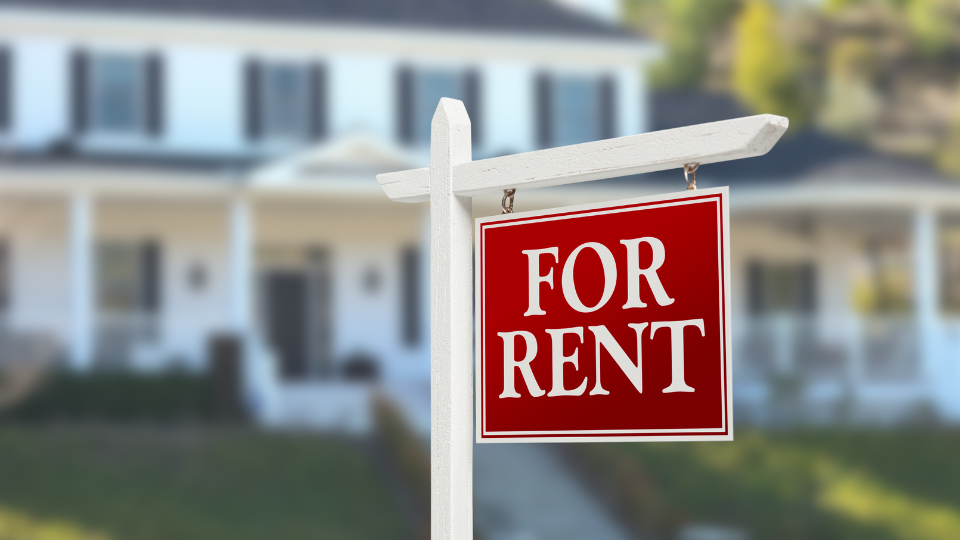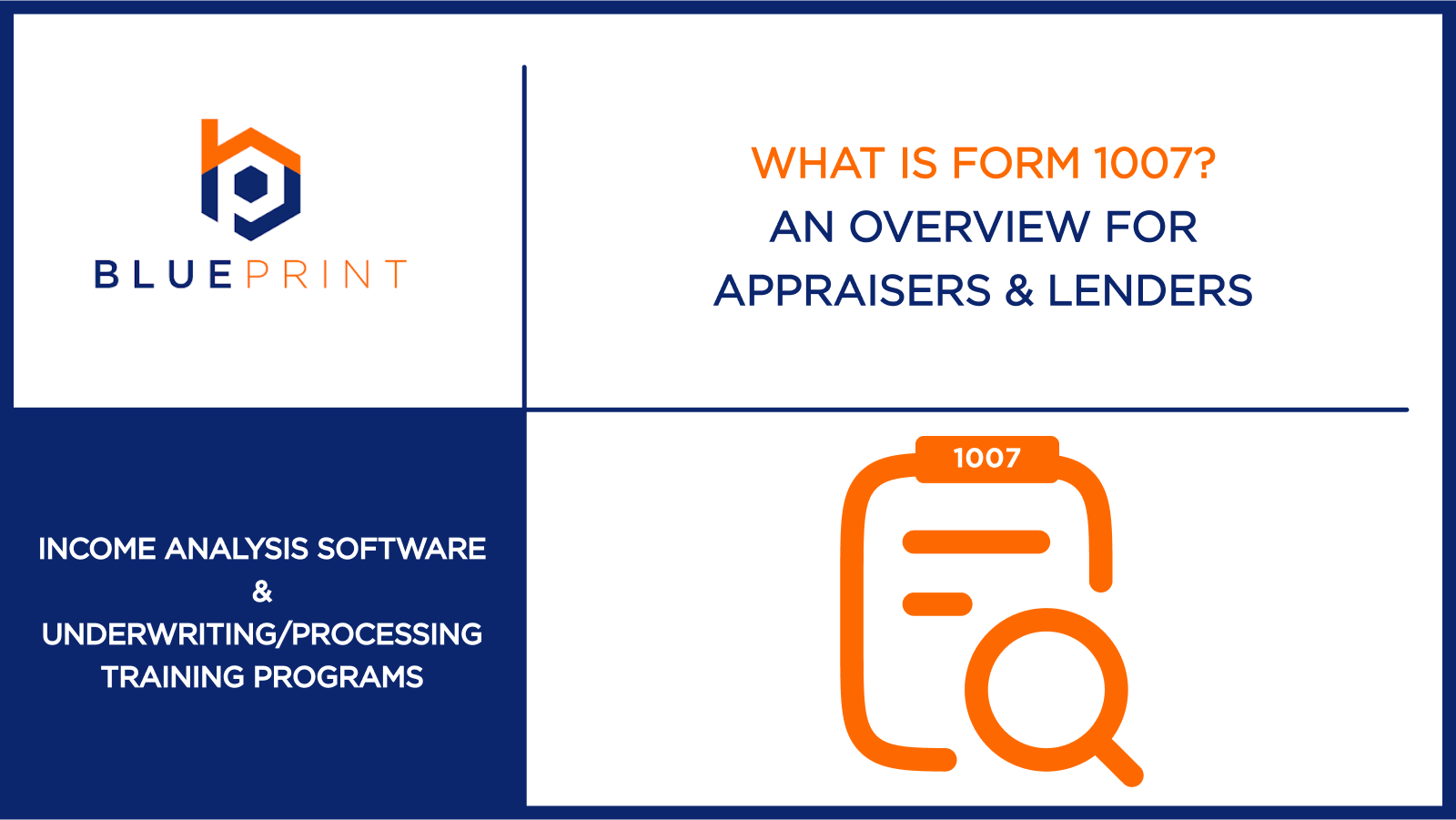Fannie Mae’s Form 1007, formally known as the Single-Family Comparable Rent Schedule, is a vital document in the appraisal process for investment properties, particularly one-unit properties and single-family homes.
This form plays a critical role for both appraisers, who are responsible for its accurate completion, and lenders, who rely on it to evaluate a property’s income-generating potential and the borrower’s financial capacity. In this article, we provide a comprehensive overview of Form 1007, detailing its purpose, how appraisers complete it, and how lenders utilize it in their assessment of investment property financing.
Main takeaways from this article:
- Form 1007 is a Fannie Mae-mandated form used to estimate the market rent of a single-family investment property.
- Appraisers use comparable rental data and make adjustments to arrive at a supported market rent opinion.
- Lenders use Form 1007 to determine a borrower’s rental income eligibility and to assess the risk associated with the loan.
- Accurate completion and interpretation of Form 1007 are important for sound underwriting decisions.
What is Fannie Mae Form 1007?

Fannie Mae Form 1007 is a standardized document designed to provide a clear and consistent method for estimating the monthly market rent of a single-family property. It requires appraisers to analyze comparable rental properties and make adjustments based on differences between these properties and the subject property. The goal of this form is to arrive at a well-supported opinion of the subject property’s potential rental income in the current market.
What is the role of Form 1007 in real estate?
Form 1007 plays a multifaceted role in the real estate landscape, particularly in the context of investment property transactions. It helps lenders:
Estimates the monthly market rent for single-family properties
Form 1007 provides a reliable estimate of the monthly rent a single-family property is likely to command in the open market. This estimate is based on an analysis of comparable rental properties that share similar characteristics and are located in the same or a competing market area.
Provides standardized comparisons
The form provides a standardized format for comparing rental properties, enabling appraisers to systematically document essential features such as location, size, condition, amenities, and lease terms. This uniform structure promotes objective and consistent analysis of rental data across various properties and appraisals.
Assists in determining property value
Form 1007 estimates rental income rather than market value, but it can be used in the income approach to valuation, which assesses the present value of future income streams.
The estimated market rent from Form 1007 is particularly relevant for investment properties, where income generation significantly influences value. Lenders may also evaluate the connection between a property’s value and its potential rental income.
Supports lender risk assessment
For lenders, Form 1007 is a crucial tool in evaluating the risk associated with financing an investment property. The estimated market rent provides insight into the borrower’s potential income from the property, which can be used to assess their ability to cover mortgage payments, property taxes, insurance, and other operating expenses.
How does the appraiser complete Form 1007

For appraisers, completing Form 1007 accurately requires a thorough understanding of the local rental market and appropriate adjustments for differences between the subject property and comparable rentals.
1. Enter property information
The initial section of Form 1007 requires the appraiser to provide detailed information about the property, including:
- Location/view: The appraiser must describe the subject property’s location and any significant views it may offer. Location can have a substantial impact on rental rates, with properties in desirable neighborhoods or with attractive views typically commanding higher rents.
- Design and appeal: The architectural style, layout, and overall aesthetic appeal of the property are noted. Properties with modern designs or unique features may attract higher rents.
- Age/condition: The age of the property and its current physical condition are important factors. Well-maintained and newer properties generally command higher rents.
- Room count: The number and types of rooms are recorded. A property with more bedrooms or bathrooms may be able to command a higher rent.
- Gross living area (GLA): The total finished and above-grade living space of the property is measured and reported. Larger properties typically have higher rental potential.
- Lot size: The size of the property’s land is noted. A larger lot may be desirable for tenants seeking outdoor space.
- Property type: The specific type of property (e.g., detached house, townhouse, condominium) is identified. Rental rates can vary based on property type.
- Utility services: The utilities included in the rent (e.g., water, sewer, trash, gas, electricity) are listed. If tenants are responsible for some or all utilities, this will influence the comparable rental analysis.
- Parking availability: The type and number of parking spaces available (e.g., garage, carport, street parking) are noted. Adequate parking is often a significant factor for renters.
2. Gather comparable rent data
Form 1007 focuses on analyzing comparable rental properties. The appraiser must find at least three similar properties based on location, size, condition, and features, with reliable rental data available.
Sources for this data include real estate listings, property management companies, and local market providers. For each comparable property, the appraiser needs to document the address, lease date, monthly rent, and relevant characteristics for comparison.
3. Apply adjustments for comparables
After gathering comparable rental data, the appraiser adjusts the rental rates to reflect differences between the comparables and the subject property. These adjustments, based on market analysis and professional judgment, typically cover categories such as:
- Location: Differences in neighborhood desirability, school district quality, and proximity to amenities.
- Physical characteristics: Variations in GLA, room count, age, condition, and lot size.
- Features and amenities: Differences in appliances, upgrades, parking, and community amenities.
- Lease terms: Variations in lease duration or included utilities.
The appraiser provides explanations for each adjustment, detailing the rationale and the specific dollar amount or percentage. The goal is to adjust the comparable rents to reflect what they would likely rent for if they had the same characteristics as the subject property.
4. Calculate the final market rent
After applying all necessary adjustments to the comparable rental rates, the appraiser evaluates adjusted rental rates to determine the market rent for the subject property.
This method considers the significance of each comparable property and the extent of adjustments rather than just averaging the adjusted rents. It then provides a single estimated monthly market rent, which is crucial information for investors.
5. Verify data accuracy
The appraiser must verify the accuracy of all data added to the form. This includes confirming the details of the subject property and the comparable rentals, as well as the rationale and calculations for any adjustments made. Reliable data and sound analysis are essential for a credible market rent estimate.
How lenders use Form 1007 to evaluate borrower income

Lenders rely heavily on the information provided in Form 1007 to assess the financial viability of an investment property and the borrower’s capacity to manage it by:
Determining rental income eligibility
Lenders use the estimated market rent from Form 1007 to determine the potential rental income the property is likely to generate. This income is a key factor in assessing the borrower’s debt-to-income ratio and their ability to service the mortgage.
Lenders often have specific guidelines regarding the acceptable ratio of rental income to mortgage payments and other property-related expenses.
Verifying consistency in rental income
By reviewing the comparable rental data and the adjustments made by the appraiser, lenders can evaluate the consistency and supportability of the estimated market rent.
Major discrepancies among the adjusted comparable rents or a lack of clear justification for adjustments may raise concerns about the reliability of the income projection.
Adjusting loan terms based on rental income
The perceived risk associated with a loan on an investment property is often influenced by its income-generating potential. A well-supported and stable market rent estimate may lead to more favorable loan terms, while a less certain or lower potential income may result in stricter requirements or a higher interest rate.
Mitigating risk through accurate income data
Accurate rental income data, as provided by Form 1007, helps lenders mitigate the risk of default. If the actual rental income falls significantly short of the appraiser’s estimate, the borrower may struggle to meet their financial obligations. A thorough review of Form 1007 helps lenders make informed decisions and avoid potential losses.
Supporting decisions in investment property financing
Form 1007 provides critical data that supports the overall decision-making process for investment property financing. It complements the property valuation provided in Form 1004 and offers a specific analysis of the property’s income-generating capability, which is paramount for investment properties.
Common mistakes when interpreting Form 1007 for income analysis

Mistakes in misinterpreting Form 1007 can lead to inaccurate income analysis and flawed lending decisions. These mistakes could be:
- Misinterpreting rental income adjustments: A lack of clear explanation or unsupported adjustments can lead to an unreliable market rent estimate. Simply accepting the final adjusted rents without understanding the underlying rationale can be a mistake.
- Overestimating rental income potential: Relying solely on the highest adjusted comparable rent or failing to consider market trends and property-specific conditions can lead to an overestimation of the subject property’s rental income potential.
- Failing to account for property-specific conditions: While appraisers are expected to adjust for differences, lenders should also consider any unique characteristics of the subject property that may not be fully captured in the comparable data. These could include recent renovations, specific amenities, or potential management challenges.
- Ignoring compliance with Fannie Mae guidelines: Lenders must ensure that Form 1007 has been completed in accordance with Fannie Mae’s guidelines. Any deviations or omissions may raise concerns about the validity of the market rent estimate.
- Underestimating the impact of inaccurate data: Using inaccurate or unverified rental data for the comparables can skew the market rent estimate. Lenders should be aware of the sources of the data used by the appraiser and any potential limitations.
How IncomeXpert simplifies income analysis
While Form 1007 helps appraisers estimate market rent, lenders are responsible for analyzing borrower income across a wide range of sources to determine eligibility. This includes not only rental income but also wages, self-employment earnings, and other financial documentation that must be reviewed for accuracy and compliance.
IncomeXpert helps lenders streamline this broader income analysis process by automating calculations, reducing manual work, and ensuring consistency across files.
Automates income data extraction
IncomeXpert extracts and calculates income from documents such as pay stubs, tax returns, VOEs, and more, reducing manual input and improving consistency. This can lead to a more data-driven and less time-consuming process.
Ensures compliance with Fannie Mae guidelines
By providing a structured framework for income analysis, IncomeXpert can help ensure that the process aligns with Fannie Mae’s requirements for forms like Form 1007. This can aid appraisers in completing the form accurately and help lenders verify compliance.
Reduces manual errors in income assessment
Automating data extraction and calculations can minimize the risk of manual errors that can occur during the traditional income analysis process. This contributes to greater accuracy in the estimated market rent.
Speeds up underwriting decisions
For lenders, IncomeXpert can expedite the review of rental income data by providing a more organized and easily digestible analysis. This can lead to faster underwriting decisions and improved efficiency in the loan approval process.
Improve income analysis for investment properties with IncomeXpert
Leveraging technology to refine the evaluation of investment property income offers considerable advantages. IncomeXpert presents a modern solution to the often intricate process of analyzing rental income.
By automating data retrieval, structuring comparisons, and aiding in the application of market adjustments, IncomeXpert can contribute to a more robust and dependable income analysis. This, in turn, supports more informed decisions for both appraisers in their valuation work and lenders in their underwriting processes.
Form 1007 FAQs
What is Form 1007 used for?
Form 1007, the Single-Family Comparable Rent Schedule, is used by appraisers to estimate the monthly market rent of a single-family investment property by comparing it to similar rental properties.
Who fills out Form 1007?
Fannie Mae requires a licensed or certified appraiser to complete Form 1007 as part of the appraisal process for single-family investment properties.

